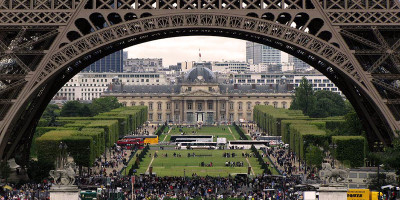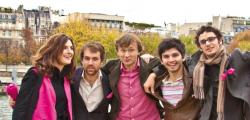
Glacier Lagoon Iceland. Author diego_cue. Wikimedia Commons
Top 10 Intriguing Facts about Glacier lagoon, Iceland
Jökulsárlón Glacier Lagoon is one of Iceland’s most iconic locations. Located in the South East of Iceland, this enormous lake is fed by glacial meltwater from the largest Glacier in Europe.
The icebergs floating in the water have broken off from Breiðarmerkurjökull glacier tongue, an outlet of Vatnajökull. This is the biggest ice cap in the whole of Europe. Each iceberg is unique, ranging in color from a glowing blue to the streaky black of volcanic ash.
No matter what their color, they are each uniquely beautiful. They drift silently to the ocean where they will wash up on the shores of the nearby Diamond Beach.
1. Climate Change Is Causing The Ice To Melt
It was created by melted glacier water following a warming of global temperatures. The Icebergs floating inside the water may well be comprised of 1000-year-old glacier ice that has broken away from the Breiðarmerkurjökull glacier tongue.
Climate change is causing the ice to melt faster than the fresh snow can compensate for in the winter months. The lagoon is growing constantly, and the glacier tongue’s retreat is visible with each year that passes.
Not only does this make the lagoon unique every time you visit, but it also makes it an important place to show to our children.
2. The icebergs Look Amazing Under The Setting Sun
Due to its outstanding natural beauty, Iceland is a very popular destination for tourists. Places like the Glacier Lagoon are particularly popular and can be very busy during the daytime.
If you would prefer to visit at a quieter time, you should go earlier or later in the day. Sunset is a particularly lovely time to enjoy the lagoon. As the day comes to an end, most people have gone home and the sky is lit up with amazing oranges and pinks.
This is also the best time to snap some photos of the lagoon. The Icebergs look truly amazing under the setting sun.
3. There Is So Much More Than Meets The Eye
Everyone knows that Icebergs are mostly hidden beneath the surface. But you might be surprised to know how deep the Glacier Lagoon is. The lagoon is the deepest lake in the whole of Iceland. In some places, it is an incredible 250 meters deep.
Because of the rapidly melting ice cap, it is getting constantly bigger, whilst the glacier feeding it is getting smaller. The deep waters are certainly not empty.
4. Lots of life can be found beneath the surface

Eiders In A Glacier Lake. Unknown Author. Wikimedia Commons
The water is teeming with fish like herring, trout, salmon, krill, and capelin, which make a tasty snack for the seals and seabirds of the lagoon. You can find seals at the lagoon year-round, but they are particularly active in the winter when they come here to catch their food.
Bird lovers should keep their eyes peeled for the Arctic Tern and Great Skua, who will have no fear about letting you know when you’ve got too closer to their nest. Occasionally a whole shoal of fish gets swept into the lagoon from the ocean, and the birds enjoy a feeding frenzy.
5. It’s Right Next Door To Diamond Beach
After the glaciers have escaped from the lagoon, they float out to sea. Here they are broken up by the churning waves and washed up on the black sands of the nearby Breiðamerkursandur beach, known as Diamond Beach. Many people miss Diamond beach when they visit the Jökulsárlón Glacier Lagoon.
6. It Changes Every Day
Glaciers are known for their dynamic, changing nature. They are not stagnant pieces of ice. They are flowing, growing, and receding all the time. They are formed as the combined weight of thousands of years of fresh snowfall causes an enormous sheet of ice to form, which then starts moving and flowing under its great weight.
The melting and reforming of ice sculptures mean you can never walk across the same Glacier or step into the same Ice Cave twice. New icebergs are constantly being created and floating across the lagoon. Each of them is unique in size, shape, and color. From unearthly blue to crisp white, to the stripy black of volcanic ash.
7. There is A Secret Glacier Lagoon
At the secret lagoon, the waters are not quite so clear. Mixing with the earth, they are a murky brown color rather than the vibrant blue of Jökulsárlón.
However, the floating icebergs are just as impressive, and you can take a small boat right up to the glacier’s edge.
8. The Landscapes Have Attracted Many Filmmakers
Jokulsarlon’s icy landscapes have attracted many filmmakers to shoot scenes for their movies in Iceland. The James Bond films “Die Another Day” and “A View to a Kill” were filmed at the glacial lagoon. “Tomb Raider” was filmed there, too. Both “Batman Begins,” and “Interstellar” was also shot nearby at the Svinafellsjokull glacier inside Vatnajokull National Park.
Most recently, however, Vatnajokull National Park was used as a filming location for “The Secret Life of Walter Mitty.” The scenes from this movie that were shot there show Walter supposedly trekking in the Himalayas.
9. Commercials And Music Videos Have Also Been Shot Here
Several commercials and music videos have also been shot at Jokulsarlon, such as Bon Iver’s Holocene, Justin Bieber’s I’ll Show You, and the music video to Gerua from the Bollywood film Dilwale starring Shah Rukh Khan and Kajol.
10. Glacier Lagoon Boat Tour
There is a lot to do and to see at Jokulsarlon Glacier Lagoon in the summertime. From June to August, visitors have the chance to go on a boat tour, sail among the icebergs, and explore Jokulsarlon up close. Two types of boat tours are available, the amphibian boat tour, and a zodiac RIB boat tour.
Onboard the 35-minute amphibian boat tour there is an English-speaking guide, talking about the geology of Jokulsarlon and Vatnajokull glacier. Passengers also get the chance to hold a piece of ice that’s more than 1000 years old and even get a taste of it.
The Zodiac RIB boat tour takes about one hour with the advantage of being closer to the huge icebergs and covering larger areas of the glacier lagoon than the amphibian boat.

 English
English










